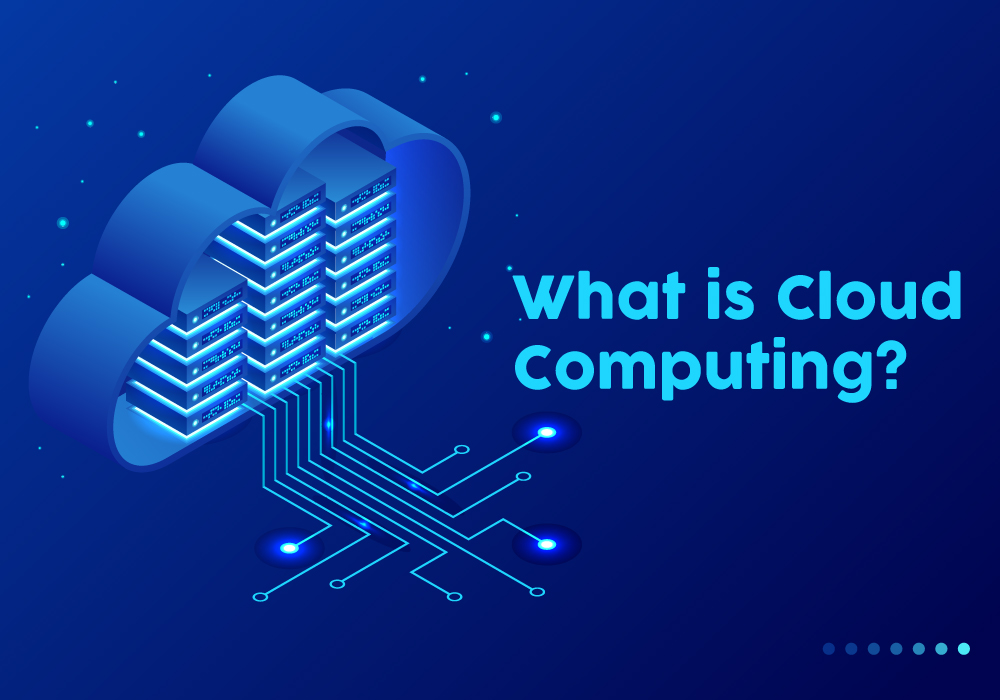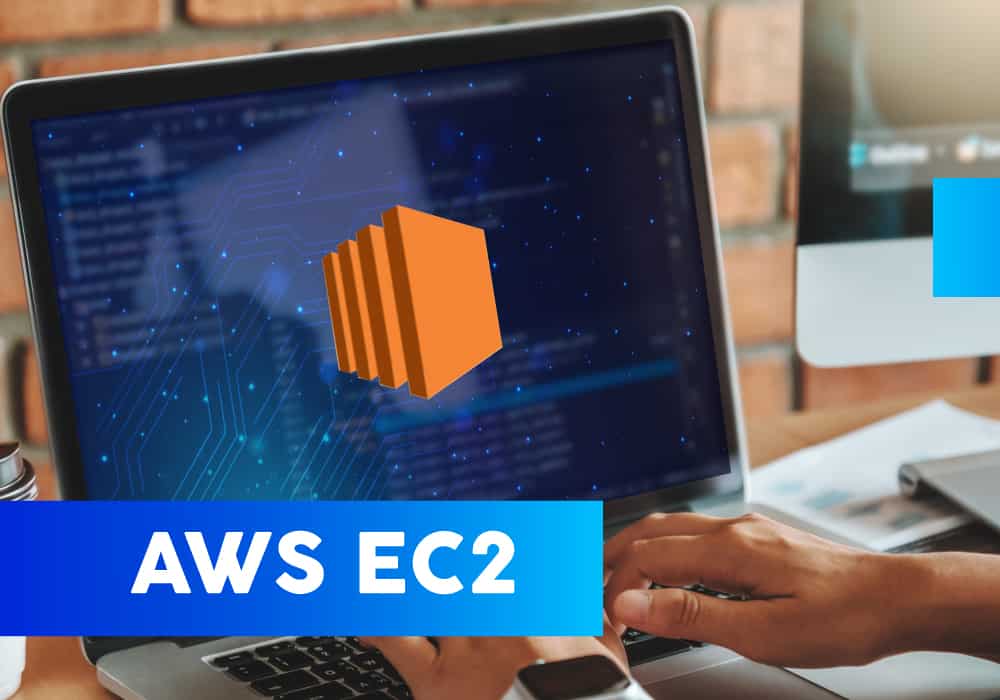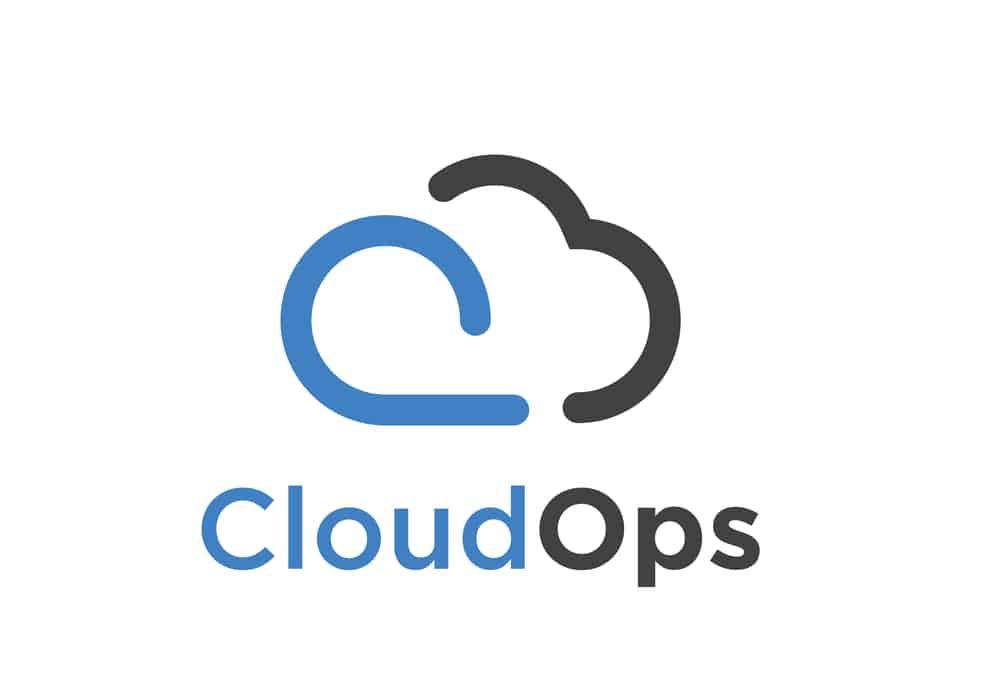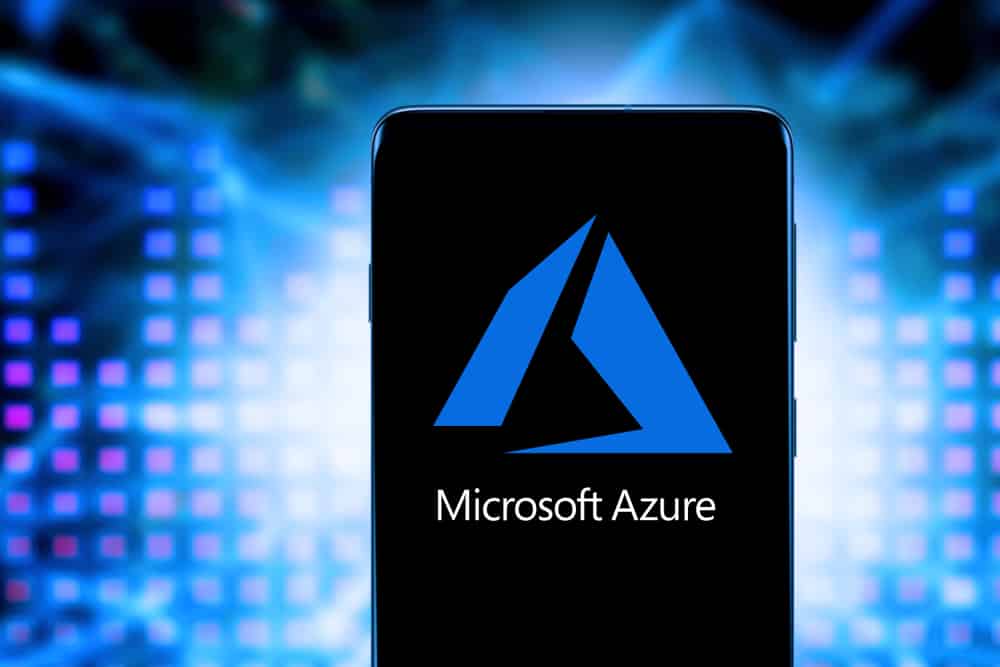The popularity of Cloud Computing and Cloud Platforms has skyrocketed in the last half a decade. These platforms have become an integral part of our lives and many applications and businesses that we see or know of. With this popularity and growing demand, many Cloud platforms have sprung up in recent years. The question that bothers many learners and business owners is which service provider to choose. In this article on AWS vs Azure vs Google Cloud, we will compare the three of the best cloud service providers in the market.
Cloud Computing is an on-demand delivery of computer system resources such as storage, applications, computing power, and other IT resources over the internet. It’s called cloud computing because users can access these system resources from any region through the “cloud” which is the internet. All user files and applications are stored on a network of remote servers instead of local servers.
Today, any internet-savvy individual makes use of cloud computing on a daily basis. Activities such as document editing, watching movies, listening to music, playing games, storing and accessing data, emails, etc. make significant use of cloud computing. On the other hand, companies use cloud computing services for developing new applications, data storage and analysis, on-demand software delivery, website and blog hosting, and video and audio streaming.
So let us start of by AWS, Azure and Google Cloud Platform. First we will start by understanding AWS.
In the cloud computing market, there are three main platform providers – Amazon Web Services (AWS), Microsoft Azure and Google Cloud Platform (GCP). AWS is the market leader among the three, while Azure and GCP are growing consistently. All three platforms have their own features that would match an application developer’s requirements.
Introduction To AWS, Azure and Google Cloud
Amazon Web Services (AWS)
Amazon Web Series or AWS as we abbreviate it is one of the leading Cloud Service providers in the market. It was initiated in 2002. Back then, it offered only a few sets of tools and services. It was in 2003 when Chris Pinkham and Benjamin Black presented a paper that helped automate and revolutionize the AWS platform.
They believed that the retail platform, Amazon, could serve a bigger and better purpose. This is when Amazon started looking at it from a larger business perspective, and we had services like Cloud Storage and Computation that came into existence by the end of 2004. It was Christopher Brown and his team that made this possible and Amazon services was cherished across the globe.
The popularity of AWS is unfathomable, and we will understand what makes this 170+ Cloud Service Provider work well. Before that, let us go ahead and understand the Microsoft Azure Cloud Platform.
Microsoft Azure
Microsoft Azure, as the name suggests, is Microsoft’s Cloud platform that lets you test, build, deploy, and even manage applications that are placed in Microsoft Azure’s data centers or Availability Zones. It has all three service model solutions just like AWS, which are infrastructure as a Service, Platform as a Service, and Software as a Service. It lets you integrate with different open source and Microsoft Stack of products/tools and programming languages.
It was announced in 2008 but was released on February 1, 2020, as Windows Azure and later on renamed to Microsoft Azure as we know it today.
Azure is similar to AWS and offers a variety of products and solutions for app developers. The Azure platform offers good processing and computing power. It is capable of deploying and managing virtual machines at scale. Azure can also run large-scale “parallel batch computing” – a unique feature that it shares with AWS over the Google Cloud Platform.
Google Cloud Platform (GCP)
Google Cloud Platform (GCP), also known as Google Cloud, announced in 2008 its first Public Cloud Service Google App Engine which become public in 2011. It was the first Platform as a Service introduced by Google Cloud. Post that, Google introduced various service cloud services in the public domain. These services reside on the same cloud space where popular Google Services reside like Google Search, YouTube, Gmail, etc.
Google is popularly known for its services in Machine Learning, Data Analytics, Compute, Storage, etc.
I believe this is enough information about the Cloud Service providers we plan to compare. Let us go ahead and understand how these compare with each other.
Market Share
When we start with market share, what better way to see the numbers than to start by taking a look at the Gartner’s Magic Quadrant for Cloud Infrastructure services.
This tells you that AWS is still leading the Cloud Market with a definitive edge. Yes, Azure and Google Cloud follow suit, but they do have some catching up to do.
Talking about the numbers, AWS had a clear head start in the market since it initiated quite early than others. But it still holds on top position in the market and by quite a margin, as Q4 in 2019, these were the respective market shares were as follows-
- Amazon Web Services: 33% of the market share
- Microsoft Azure: 18%
- Google Cloud Platform: 8% of the market share
But numbers can be deceptive. It was also revealed that AWS grew by just 41% last year. Whereas Google Cloud and Azure grew by 80% and 75% respectively. This suggests is that Azure and Google Cloud are catching up.
This was about the market share. Let us see how these Cloud Service Providers compare when it comes to their reach in terms of infrastructure.
Global Infrastructure
When we discuss the infrastructure that concerns these platforms, we have to consider two terms, those are, Regions and Availability Zones.
Regions
Here, regions mean a geographical location where a Cloud Data center resides.
Availability Zone
It is the data center that resides in a region. Regions may have more than one Data-center. Some regions, for certain services providers, have only one data center. Hence, we do not use the availability zone term in that case. That data center is called or known as region.
Here are some numbers to see how these platforms compare:
Amazon Web Services
- Regions: 24 Launched and 3 announced
- Availability Zones: 76
- Countries served: 245
Microsoft Azure
- Regions: 60+
- Countries served: 140
Google Cloud Platform
- Regions: 22
- Availability Zone: 61
- Countries served: 35
It is clear that Amazon Web Services has a wider reach and provides services to more countries than the other two platforms. Let us now move ahead and see what kind of customer base these platforms support.
Targeted Audience and Customers
AWS, Azure and Google Cloud all have high profile users and customers. Let us take a look at those.
Amazon Web Services
Amazon Web Series has the largest community support and customer base, and it has many profile customers in the market. To name a few, we have-
- McDonald’s
- Netflix
- Unilever
- Samsung
- MI
- AirBnB
- BMW
- ESPN
Companies Like Netflix, LinkedIn spend $10-19 million a month on their instances. That tells you how much trust people have in this platform and also how large and high profile the customer base is. It also has a very widespread small scale industry customer base.
Microsoft Azure
Microsoft Azure is not far behind in this race. It also has a wide customer base and has gained a lot of popularity in most of the Top Fortune 500 companies. Around 70-80% of fortune 500 companies use Microsoft Azure. Some known brands that use this platform are:
- Ebay
- Apple
- Pixar
- HP
- Honeywell
Google Cloud Platform
Among the three, Google Cloud is the youngest and has a smaller customer base compared to others. But we should not forget Google Cloud is home to YouTube, and Gmail which are huge on their own. Here is a list of some other popular customers they have-
- HSBC
- Snapchat
- HTC
- Phillips
So this was about some of the customers these Cloud Service Providers have. Please not these are just some numbers and honorable mentions. If you visit the websites for these platforms you will find a large number of customer base and even many case studies that tell you how these service providers have solved problems for numerous businesses across the globe.
Now that we know what customers these platforms serve, let us see and compare the services provided by these platforms.
Service Comparison
Amazon Web Services, Microsoft Azure and Google Cloud Platform provide numerous cloud computing services that are there in the market. If we are to bluntly put out the numbers then this is how the service numbers appear.
| Services | AWS | Azure | GCP |
| Number of Services | 212 | 100+ | 60+ |
Since there are so many services these service providers provide, these services are classified into subcategories, or domains, let us dig deeper into some of these services.
Compute Services
When we compare compute services, AWS has all the praise for EC2 which is very popular in the market. It also supports various other compute services that touch PaaS, container, and even serverless computing service. Azure also has many services that match AWS in these domains. Google Cloud, however, lacks a little when compared with these two platforms. Here is a list of some notable services these Service providers provide.
| Services | Amazon Web Services | Microsoft Azure | Google Cloud |
| Infrastructure as a Service | Amazon EC2 | Virtual Machines (VM) | Google Compute Engine |
| Platform as a Service | AWS Elastic Beanstalk | App Service and Cloud Services | Google App Engine |
| Container Services | Amazon Elastic Container Service | Azure Kubernetes Service or AKS | Google Kubernetes Engine |
| Serverless Computing | Amazon Lambda | Azure Functions | Cloud Functions |
Storage Services
Storage is a very important service when it comes to Cloud Computing because it is only after you store data you can think of other services that can help process your data. Let us see how these Service Providers take care of Storage on Cloud.
Amazon Web Services
No matter if you are looking for object, Block or file storage, AWS covers it all. Not just that, it takes storage to a different level as it provides services like Amazon Storage Gateway, Snowball and Snowmobile. These services ensure you covered even if your requirement are for hybrid storage, or even if you actually want to move your data physically. Hence Amazon Web Services has you covered here.
Microsoft Azure
Microsoft Azure’s is equally good when it comes to storing your data on cloud. It covers you with basic storage services like Blob Storage for object storage which maybe unstructured data. It provides Queue Storage if you ate dealing with large-volume storage workloads. it also provides File and Disk Storage. It covers you Big Data Application needs with Data Lake Store.
Google Cloud Platform
Google Cloud also limited in terms of Storage Services just as it is Compute domain. However it has unified object storage service, and even a Persistent Disk storage option.Just Amazon Snowball it provides Data Transfer Application, and also supports online Data transfer services.
Here is list of some popular services these platforms provide-
| Services | Amazon Web Services | Microsoft Azure | Google Cloud |
| Object Storage | Amazon S3 | Azure Disk Storage | Google Cloud Storage |
| Block Store | Amazon EBS | Azure Blob Storage | Google Compute Engine (Persistent Disks) |
| Archival/Cold Storage | Amazon Glacier | Azure Archive Blob Storage | Google Nearline |
| File System Storage | Amazon EFS | Azure File Storage | Google ZFS/Avere |
Now that we know how Storage Services have fared. Let us go ahead and see how these Cloud giants fare with each other in terms of Cloud Database offerings.
Database Services
Amazon Web Services
When it comes to databases and archiving, here too, Amazon has a plethora of Cloud Services to offer. It is SQL-compatible databases like Aurora or even databases that are Relational like the Relational Database Service (RDS). It has you covered on NoSQL Databases too, it offers service called Dynamo. Whereas, ElastiCache service provides an in-memory data store too. If your requirements need you to have a Data Warehouse, a graph database, or even services that meet data migration needs, it answers with services like Amazon Redshift, Neptune. As already mentioned in storage services, even if archival storage is to be handled even that is managed with Amazon Glacier.
Microsoft Azure
Microsoft Azure provides numerous extensive Database options. SQL database requirements are fullfilled using three database services.
- SQL DB
- DB for MySQL
- DB for PostGreSQL
It covers you for Data Warehouse requirements with Cosmos DB and their stable Storage for NoSQL. Redis Cache provides in-memory service and for Hybrid Storage requirements, there is Server Stretch Database. It is designed in such a way that it suites specific organizations that use Microsoft SQL Server for their data centers. Amazon Web Services lack a little in the backup domain. Microsoft Azure comparatively does better there and is equally adept when it comes to Archival storage.
Google Cloud Platform
It does provide SQL and NoSQL Database services. Google Cloud Spanner is a service for SQL based Databases that are designed for data critical workloads requirements. Cloud Bigtable and Cloud Datastore are its options for NoSQL database requirements. Again the number of services and options it provides in comparison to Microsoft Azure or Amazon Web Services is still less and limited. It does have services for Backup or archival. Here is a list of database services that work similarly for these cloud service providers.
| Services | Amazon Web Services | Microsoft Azure | Google Cloud |
| Relation DB | Amazon RDS | SQL DB | Google Cloud SQL |
| NoSQL DB: Key-value | Amazon DynamoDB | Table Storage | Google Cloud DatastoreGoogle Cloud Bigtable |
| NoSQL DB: With Indexing | Amazon SimpleDB | Azure Cosmos DB | Google Cloud Datastore |
So this was about Databases. Let us go ahead and compare these platforms based on Networking Domain.
Networking Domain
These services do fairly well against each other when compared and there is very little to choose when put head to head. Here is a list of services when compared head to head.
| Services | Amazon Web Services | Microsoft Azure | Google Cloud |
| Virtual Network | Amazon VPC | Azure Vnet | Google VPC |
| Load Balancing | Amazon ELB | Azure Load Balancer | Google Cloud Load Balancing |
| Cloud Peering | Amazon Direct Connect | Azure ExpressRoute | Google Cloud Interconnect |
| Domain Name Services | Amazon Route 53 | Azure Domain Name Service | Google Domain Name Service |
Pricing
Pricing is easily the hardest measure to compare these Cloud Service Providers for. This is because pricing varies greatly when it comes to comparing them based on small-term investment or short sized services. However, let us try and do that.
When it comes to short term investments or small-sized resources, Google Cloud gives better pricing options. Here is one example for the same. Let us consider small-sized virtual instances with minimum RAM and Virtual CPU requirements. Google Cloud will cost around, $50-55 per month. Amazon Web Services will cost you $69 per month and Microsoft Azure will cost you around $70-75 per month.
But as we scale up the pricing models change a lot and give you a very different picture. Let us consider this example, if we opt for the largest instance these platforms provide different pricing, an instance with around 4 TB of RAM, and around 128 Virtual CPU’s Amazon Web services offer the best pricing here, it costs around $2700 to $3000 per month. Microsoft Azure costs around $5000 per month, whereas Google Cloud costs $3800 to 4000 per month.
So it is clear that Google Cloud is cheaper when it comes to short term investments. Another point that supports the claim is Google Cloud charges on a per-second basis. Microsoft Azure gives you per minute billing. Amazon Web Services had hour billing, but in recent times it too has moved to per-minute billing.
Google Cloud ensures when it comes to small-term investments, it comes with various offers and discounts ensuring cheaper pricing. So as mentioned earlier choosing a provider based on pricing can be tricky and may vary on what sort of business requirements your business has.
Miscellaneous Comparison
We have already compared these platforms on quite a few pointers, however, there are quite a few other pointers these platforms can be compared on.
Here is an overall miscellaneous comparison. Let us start with Amazon Web Services.
Amazon Web Services
What makes Amazon Web Services stand out? Firstly its head start, meaning it has had that extra valuable years to firm its dominance in the market. This can be proven with facts. Amazon Web Services has been the market leader in terms of Market share in IaaS services, it provides and Gartner supports that claim with numbers.
Another reason for this success is the number of services it provides, it almost provides double the services the second-best competitor provides in terms of the sheer number of services it has to offer. It is a highly mature platform and is ready to serve different enterprise-level requirements. It also has deep and precise capabilities.
But everything has weaknesses. Amazon is costly when it comes to short term investments and many find it tricky to opt for this platform due to the uncertainty on its pricing models. But the wide array of services it provides makes up for the lapse in pricing concerns. Certainly Amazon’s strong points or pros overshadow Amazon’s weaknesses.
Now let us go ahead and see how Microsoft Azure Fares when it comes to its strengths and weaknesses.
Microsoft Azure
Microsoft is a company that has overcome various hurdles in the IT and software industry it has ever come across. This ability has also transpired into Cloud offerings it provides.
Microsoft always had a stronghold and contributions to the On-Premise service market. It has ensured that services and offering it provided can be moved to the cloud and can be made Azure Cloud Compatible. Even though it had a late start, it is making up for it at a very good pace.
Another major reason why Microsoft Azure is so popular and is so widely used is because Microsoft Azure integrates with most of Microsoft stack of products with easy. Hence many companies and enterprises find it relevant to migrate to Microsoft Azure because then the deployment seems easy and effortless.
Microsoft Azure is claimed to be enterprise-ready. But one of the shortcomings that people or customers complain about is the shortcomings it comes with when it comes to supporting experience that face on an enterprise level. And customers complain it is little on the shorter side.
Let us see how this platform fares compared to others, and what are its pros and cons.
Google Cloud Platform
Let us start by taking a look at its strengths first.
It offers fairly strong offerings in containers, it has developed a standard for Kubernetes, and high computation capabilities in terms of Big Data Analytics, and even Machine Learning. it also offers decent enough load balancing and scalability.
If we are to compare it with Amazon web Services and Microsoft Azure, it lacks a little here with lesser market share, and lesser number of services.
By now, I assume we have discussed numerous pointers using which you can take a call on what platform will suit your needs best. All these providers have their strengths and weaknesses, and I am sure by now you can choose one for your requirements. Before we all sign out, here are some final points.
- Market Share: Amazon Web Services is a clear winner here
- Global Infrastructure: In terms of number Amazon Web Services stands out here too
- Growth: GCP is a clear winner here
- Service Comparison: Amazon web Services wins for numbers whereas Microsoft Azure wins for integration capabilities
- Pricing: Small investments GCP wins, longer run costs Amazon Web Services is a winner
So this is, by now you should have a clear picture as to how these Cloud providers fare against each other. This brings us to the end of this article on AWS vs Azure vs Google Cloud.
Conclusion
Cloud Computing services has triggered a revolution in the IT industry. It has become a go-to factor for application implementation and hosting for all companies, whether big or small. According to a Gartner Survey Report, the market for public cloud is predicted to reach around $411 billion in 2020. This is bound to generate a wide range of job opportunities in this field. So, if you are planning to start a career in this domain, you are on the right track. Getting a cloud computing certification in this field will definitely help in learning and developing your skills. Become a cloud computing expert and join the elite group of highly paid IT professionals in the world.







